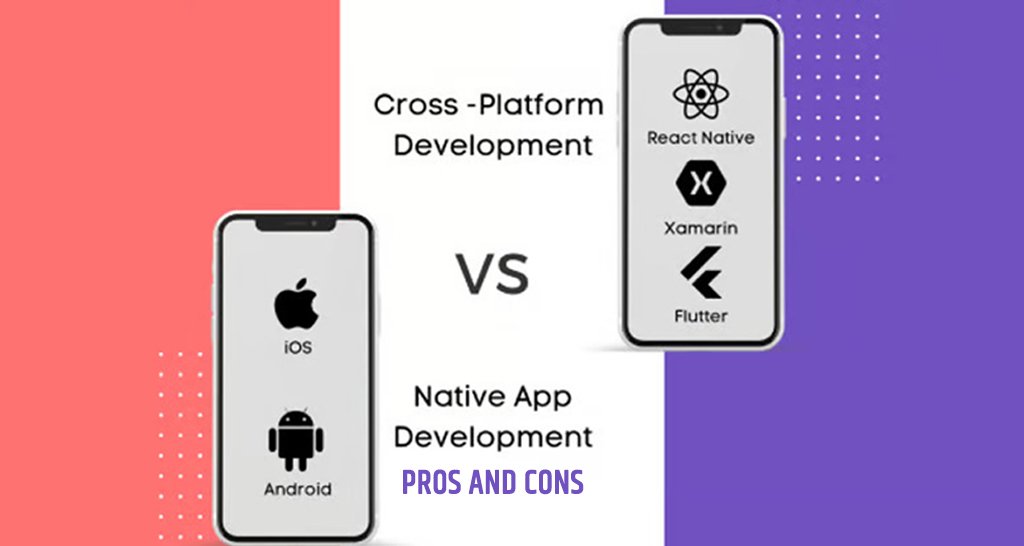In custom mobile applications development, most business organizations are stuck in front of a crucial decision-making process between cross-platform and native iOS development. Each of the two has its specific strengths and weaknesses, and the above factors, such as performance, cost, and time to market, are not spared. To guide you on the right decision, let’s look at the advantages and disadvantages of each.
Cross-Platform Development
Pros:
Cost-Effectiveness: Among the critical benefits of cross-platform custom mobile app development, is possible to highlight the fact that it is less costly. This integration alone can save a lot of costs that are usually incurred in the development of both iOS and Android applications. When it comes to calculating the cost of designing an app, cross-platform development usually comes into mind as the cheaper solution.
Faster Time to Market: The outcomes of this analysis indicate that a unified codebase speeds development and deployment. This allows businesses to convey their messages to the target audience using the identified platforms simultaneously, thereby giving them a competitive edge.
Easier Maintenance: Updating and managing a single codebase requires less effort than managing multiple codebases from different native languages. This process keeps the different platforms standardized so they are uniform in look and feel, and errors are limited.
Wider Reach: Cross-platform apps allow businesses to reach more people as the application can be developed on different operating systems, bettering the user experience and increasing the potential for profit.
Cons:
Performance Limitations: Developing cross-platform apps may not be as efficient and effective as developing apps that are native to the platform being used, especially for graphically intensive and computationally demanding apps. Such performance problems may negatively affect the perceived usability of the end users.
Limited Access to Native Features: Although frameworks that allow for creating applications for both platforms simultaneously, such as React Native and Flutter, help overcome this issue, developers can still be somewhat behind in using iOS’s (new) APIs.
User Experience: Unfortunately, when it comes to creating cross-platform apps, the idea of a perfect user experience is usually far from ideal. Most apps fail to meet the expectations of both iOS and Android users, not even coming close to the guidelines laid down for both platforms. This can result in the development of an app that is not very user-friendly and engaging.
Native iOS Development
Pros:
Optimal Performance: The native iOS application uses Swift or Objective-C and is developed specifically for the iOS system. This helps achieve high performance, which is always associated with responsiveness and reliability when it comes to delivering quality experiences to end users.
Full Access to iOS Features: Native development is beneficial in that it gives the developer full control of the application and its features. It also supports newer versions of iOS and its APIs, enabling the integration of new specialized features into your app and enhancing the overall user experience.
Enhanced User Experience: Native iOS apps can follow Apple’s Human Interface Guidelines almost to the letter and, therefore, provide users with a familiar and easy-to-use UI. This alignment can sometimes lead to higher user satisfaction and participation.
Better Integration: The main advantage of native apps is that they are optimized to use the system’s resources. This means that accessing resources like cameras, GPS, or push notifications will be more effective.
Cons:
Higher Development Costs: The contradiction in the native mode of development leads to the creation of an individual code base for the iOS and Android platforms, which in turn costs more to develop. That is why, when answering the question ‘How much does it cost to design an app?’, one should note that native development is usually more costly.
Longer Development Time: As mentioned earlier, creating, as well as maintaining, a different app for every platform takes a lot of time which results in a longer time to market.
Maintenance Complexity: Coping with several sources of code might be rather challenging and time-consuming; thus, it is crucial to develop a separate team for each platform.
Conclusion
The decision to choose cross-platform application development or native iOS development depends on some factors, such as how much it costs to design an app, time, and specific requirements of the project. Developing applications for more than one operating system is cheaper and faster than the development of an application for a single operating system, and specifically for iOS applications, the performance is better, the usage experience is more enhanced, and the ability to access new features is more enhanced. Companies must analyze their goals and limitations to determine which of the approaches would be most effective for the development of their custom mobile applications.












